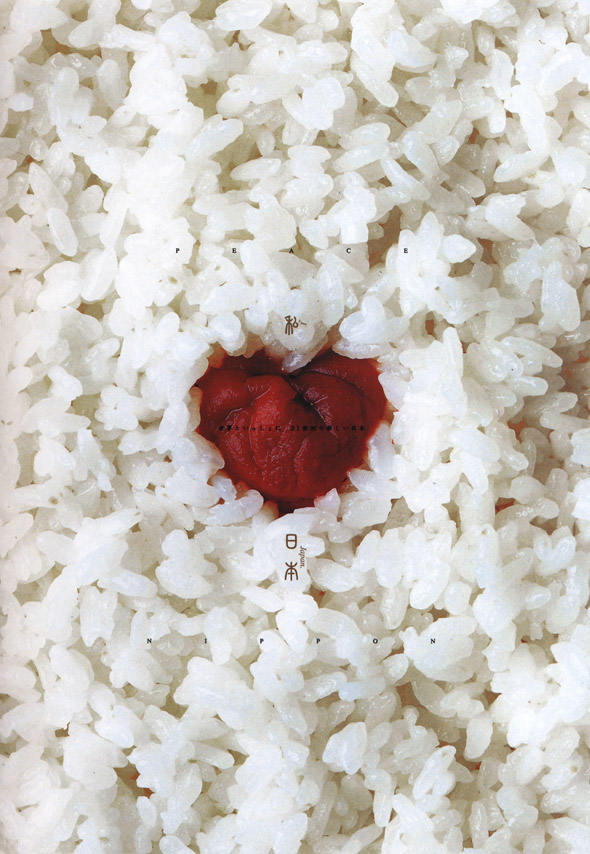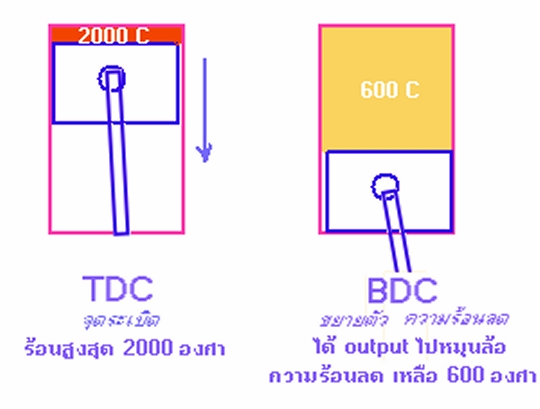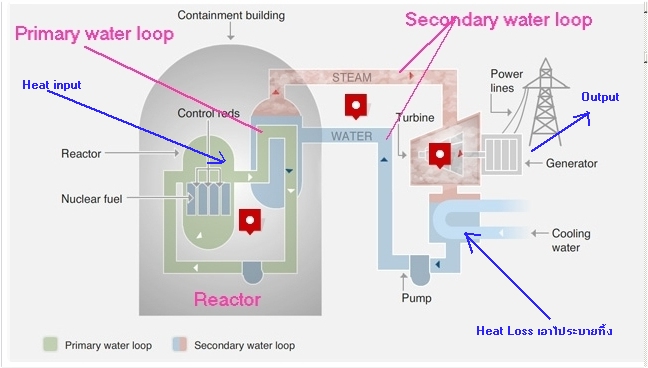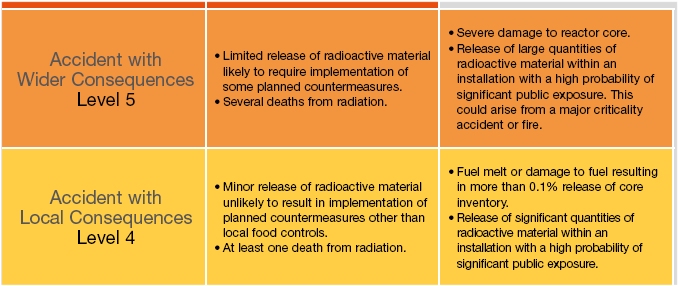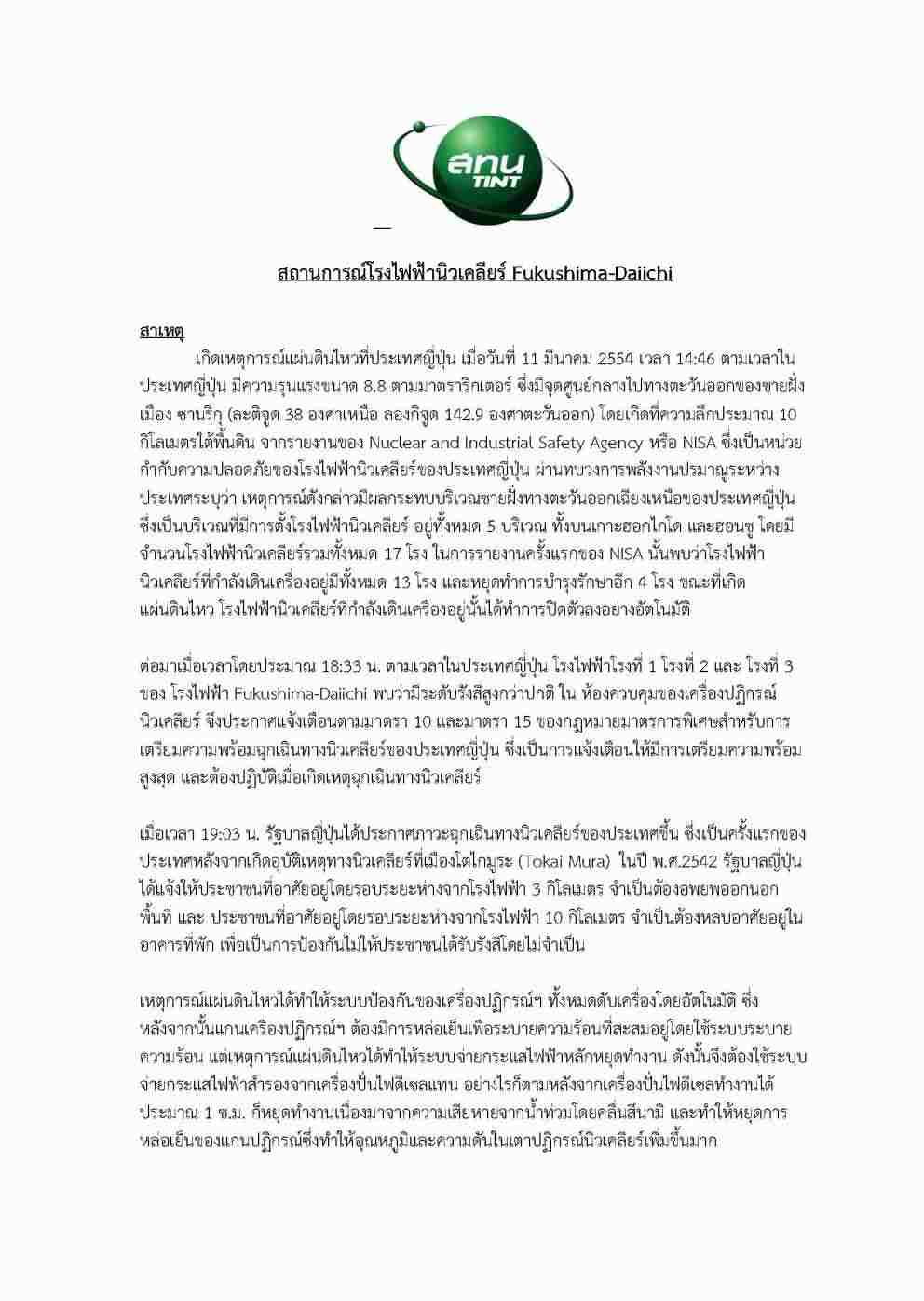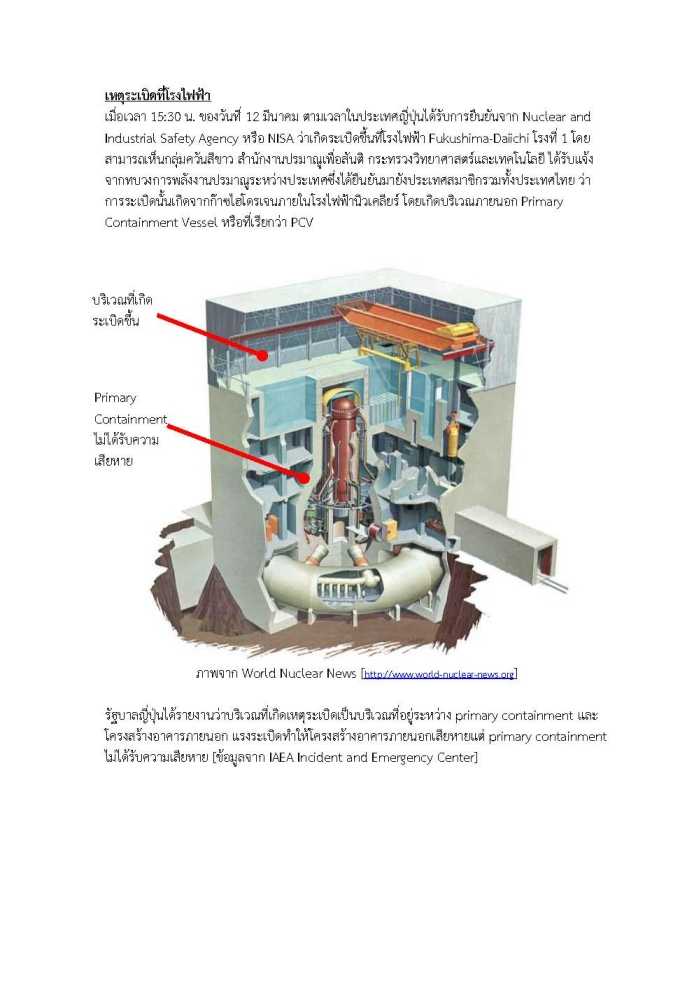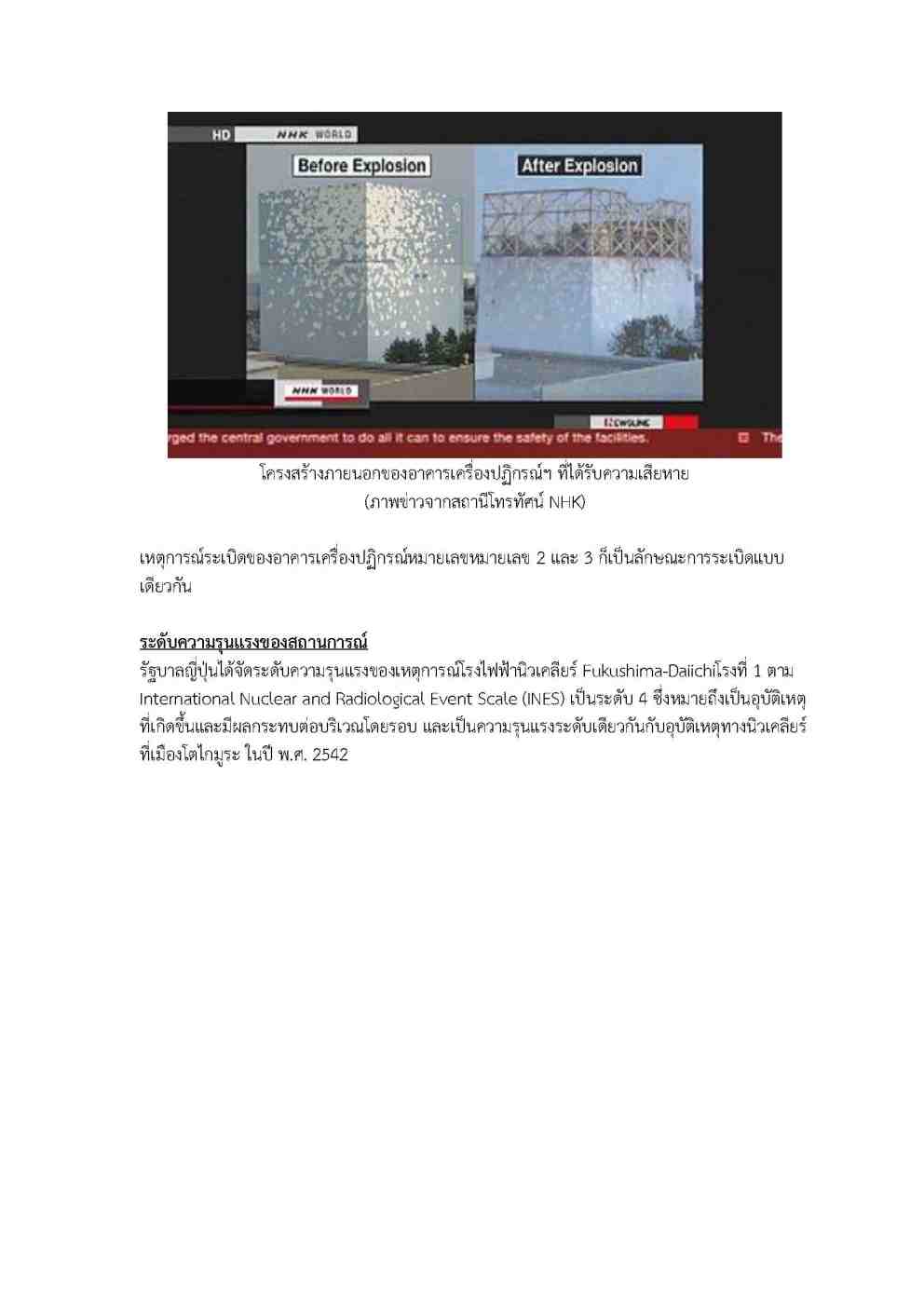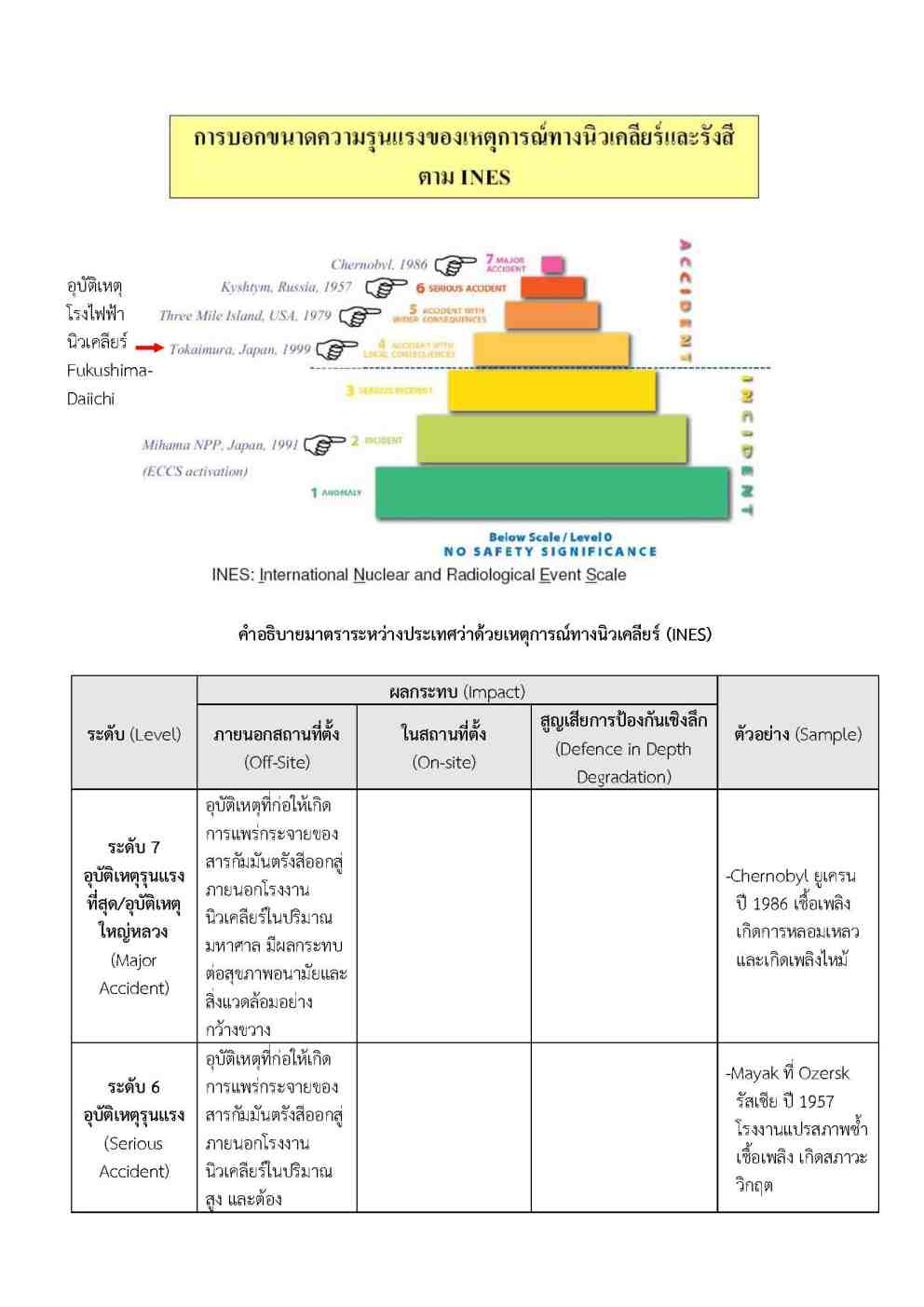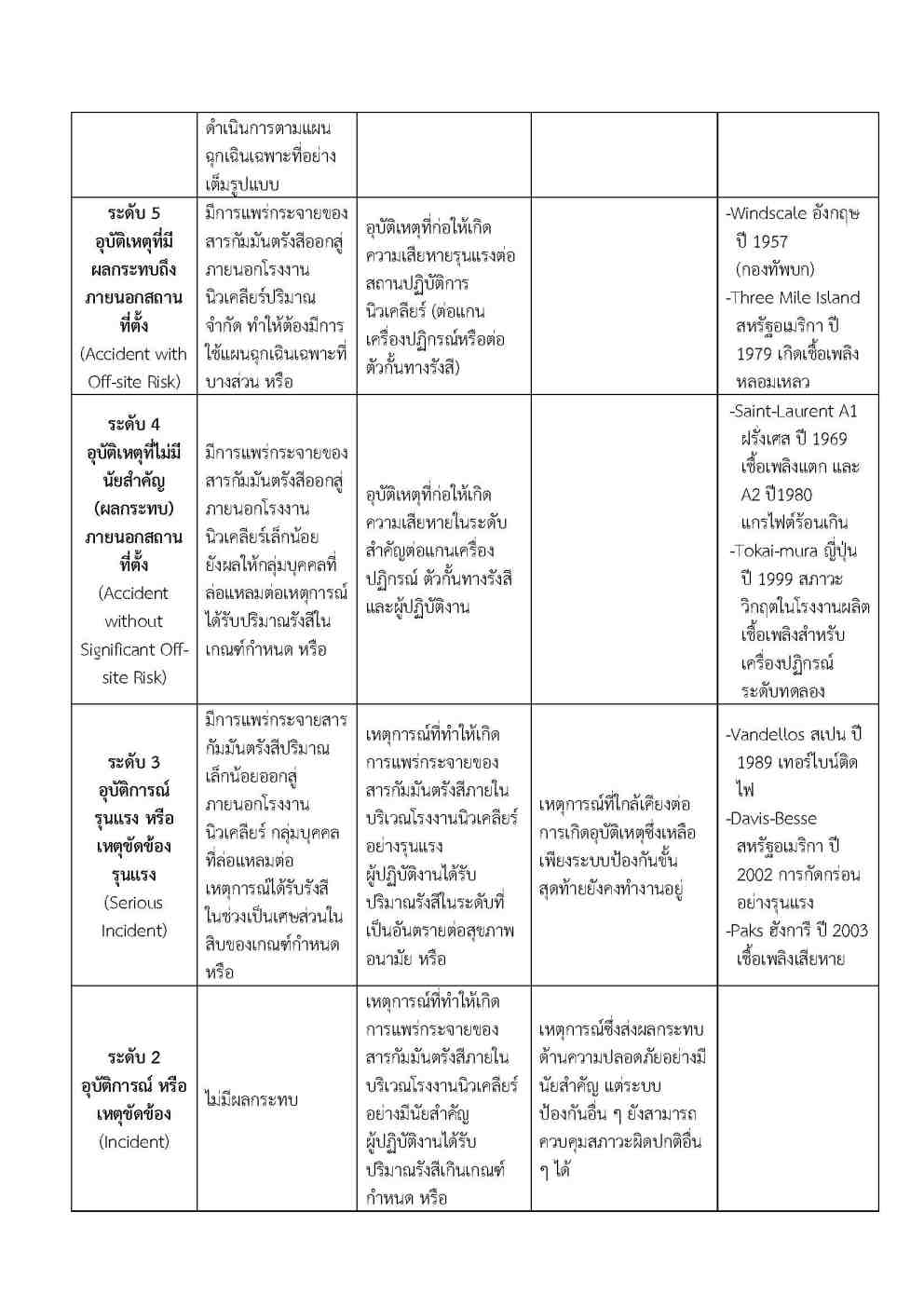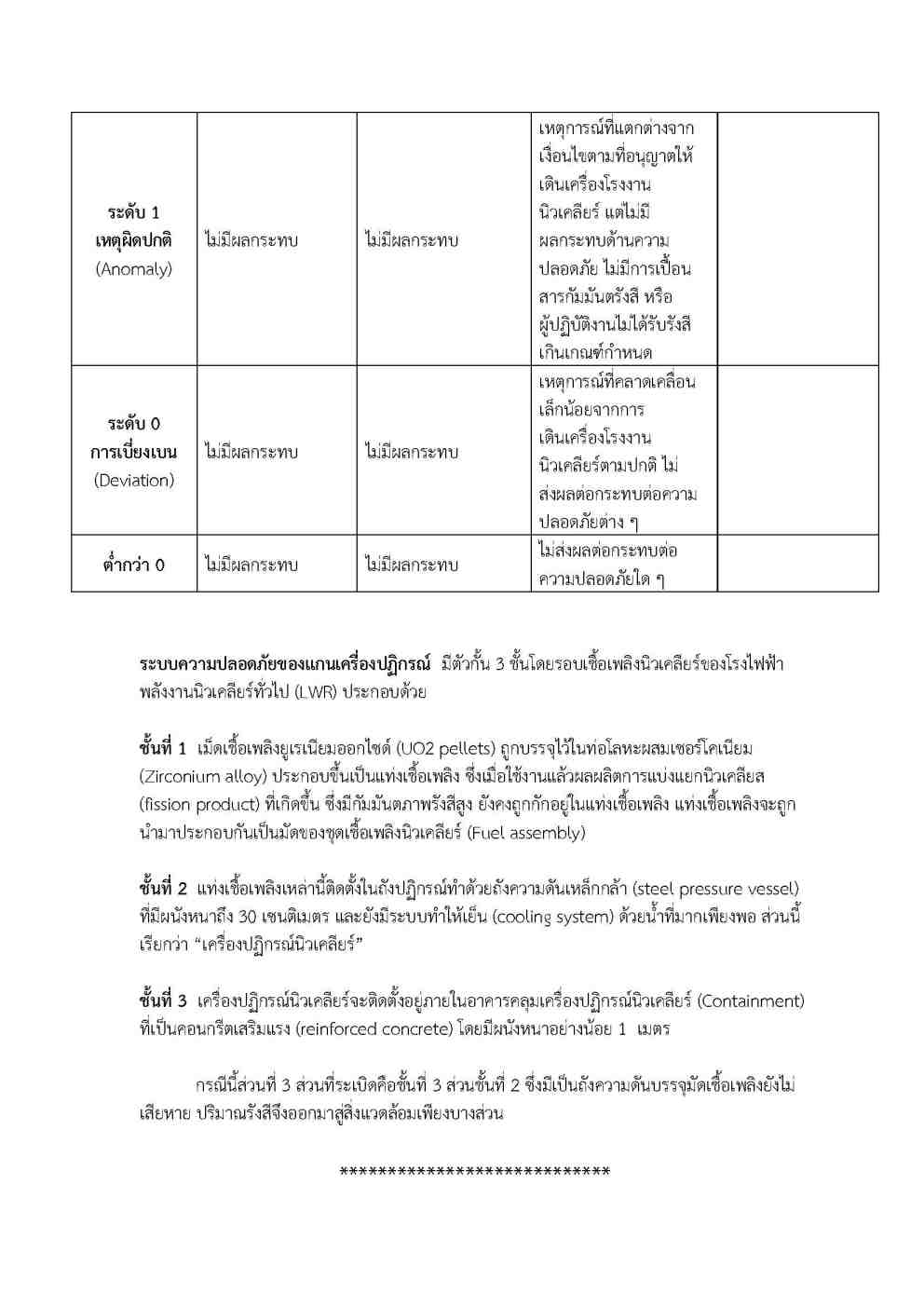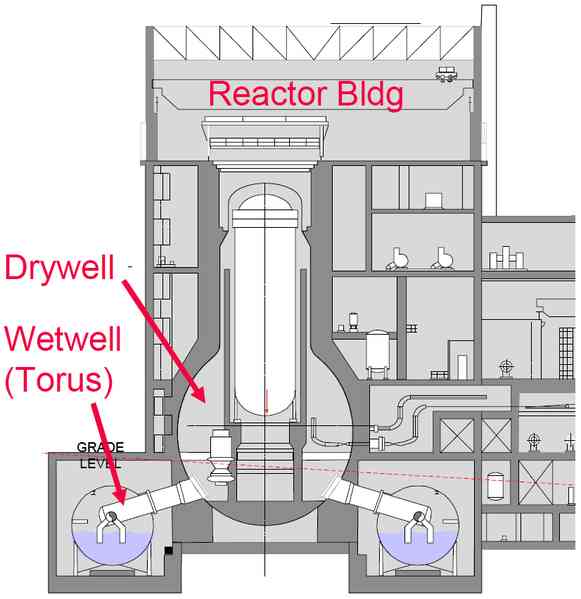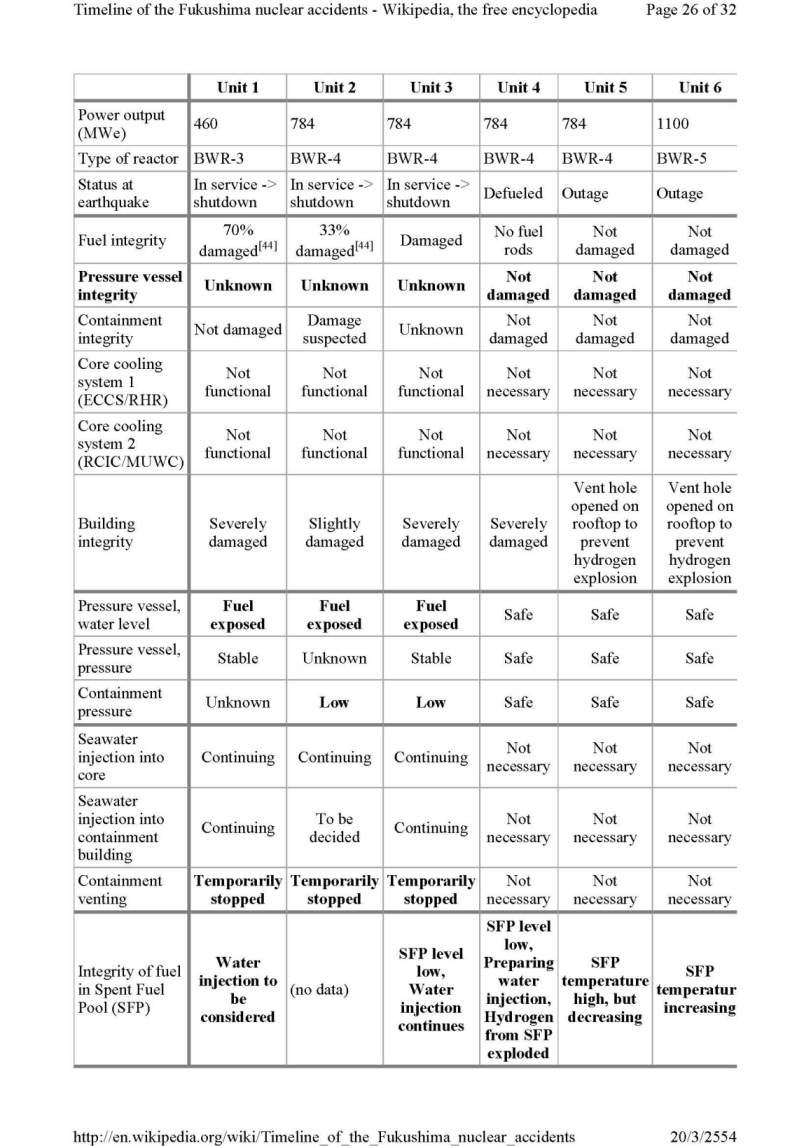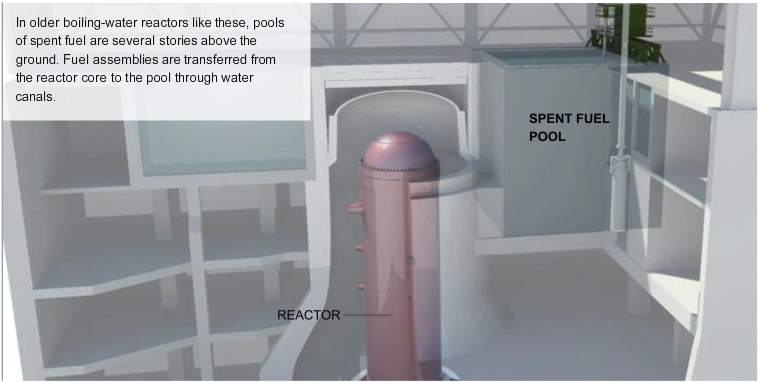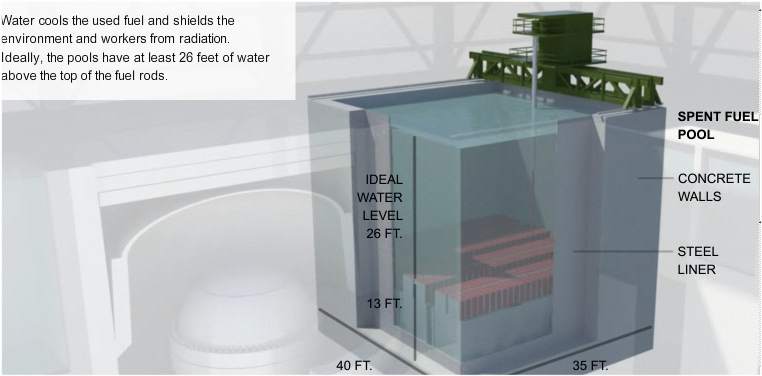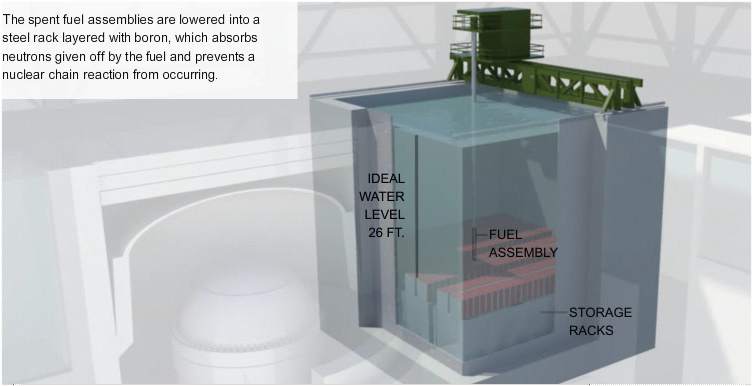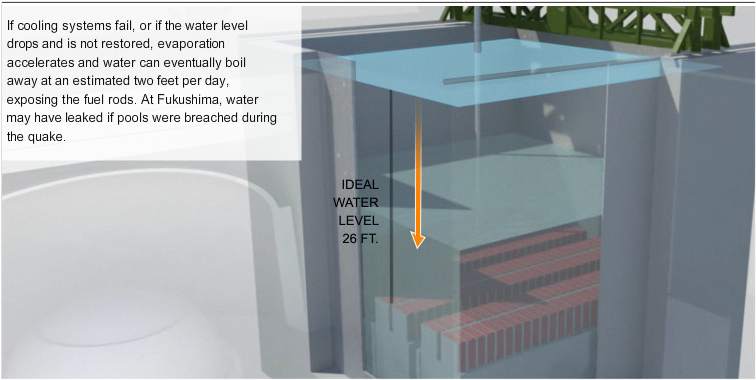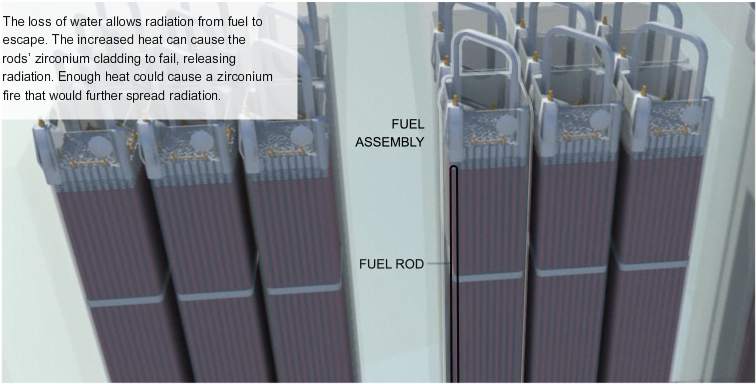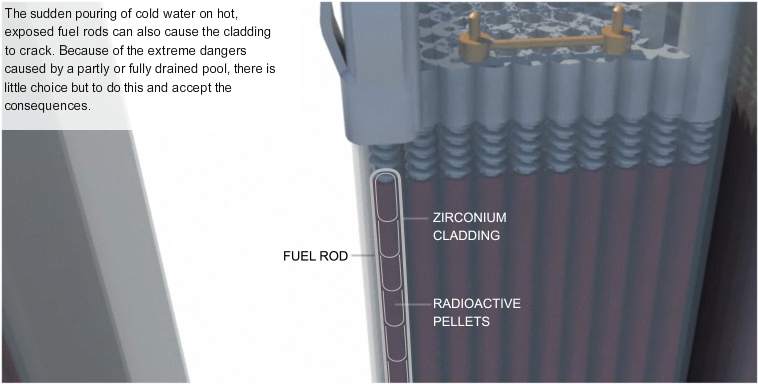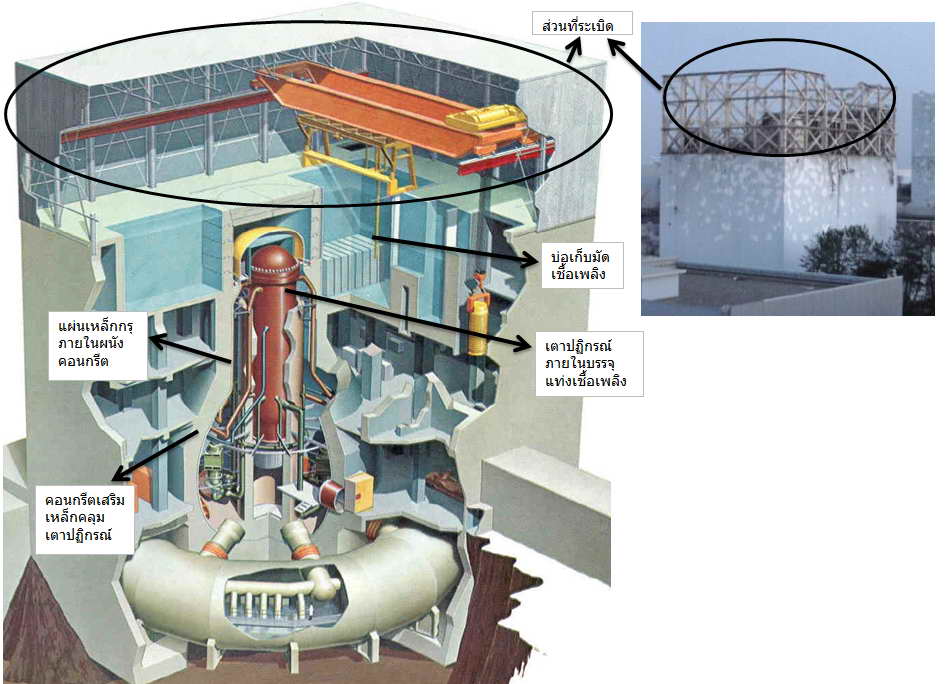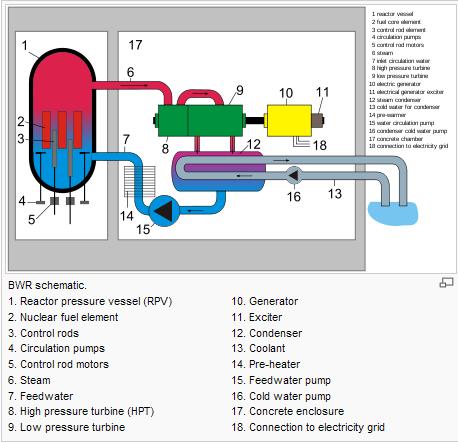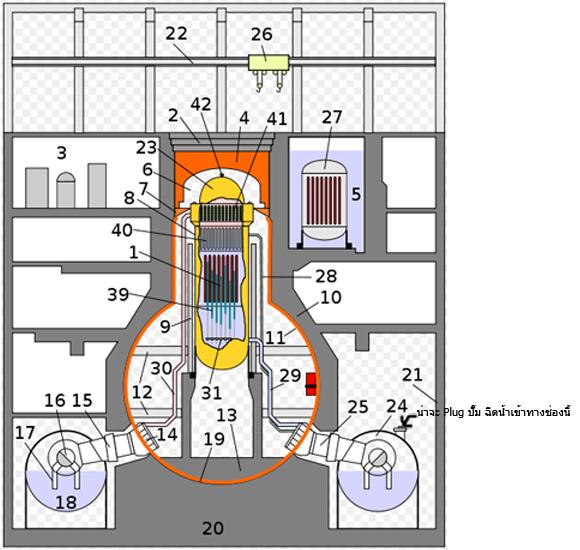 The most significant difference between the RBMK design and
The most significant difference between the RBMK design and
most of the world's nuclear power plants is the RBMK's lack of a
massive steel and/or concrete containment structure as the final barrier
against large releases of radiation in an accident. The effectiveness of
American-style reactor containments was shown in the 1979 Three Mile
Island Unit 2 accident, when virtually all radiation was retained inside the
containment building, despite considerable melting of the fuel. In the
Chernobyl accident, the RBMK plant's accident localization system (the
RBMK's version of containment) could not withstand the force of the
accident. However, because the estimated energy released by the
explosions was greater than most containment designs could withstand, it
is highly unlikely that a containment structure could have prevented the
release of radioactive material at Chernobyl.
The reactor produces faster and less stable nuclear chain reactions--and
power increases--when cooling water is lost. In technical terms, this
characteristic is called a "positive void coefficient." Soviet engineers
sought to mitigate this tendency by backfitting RBMKs with faster-acting
control rods and other improvements. Modifications made to all RBMKs
are generally considered to be adequate to maintain this positive void
defect at a low enough level to preclude the type of nuclear excursion--a
sudden, rapid rise in power level--that occurred at Unit 4. U.S.-style light
water reactors are designed with just the opposite characteristic--a
"negative void coefficient"--so that the nuclear chain reaction
automatically stops when coolant is lost. The design of the Kursk 5
RBMK has reportedly been modified, resulting in a negative void
coefficient.
credit:
http://www.globalsecurity.org/wmd/world/russia/rbmk.htm
หมายเหตุ.. หลังจากอุบัติเหตุ มีการแก้ไข .. ปัจจุบันมีโรงไฟฟ้านิวเคลียร์แบบ RBMK 15 แห่งใช้งานใน รัสเซีย, ยูเครน และ ลิทูเนีย

 เนื่องจากมีคนหวาดกลัว การรั่วของกัมมันตภาพรังสี จากอุบัติเหตุโรงไฟฟ้านิวเคลียร์ บางคนถึงกับออกมาชักชวนให้ ยกเลิกการสร้างโรงไฟฟ้านิวเคลียร์ในประเทศ
เนื่องจากมีคนหวาดกลัว การรั่วของกัมมันตภาพรังสี จากอุบัติเหตุโรงไฟฟ้านิวเคลียร์ บางคนถึงกับออกมาชักชวนให้ ยกเลิกการสร้างโรงไฟฟ้านิวเคลียร์ในประเทศ 


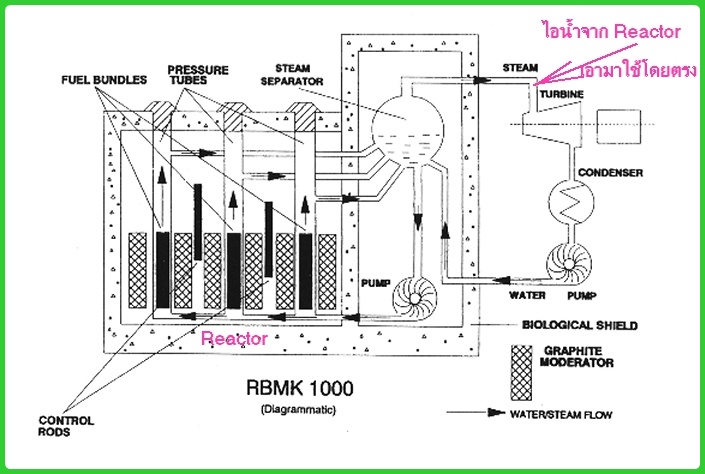


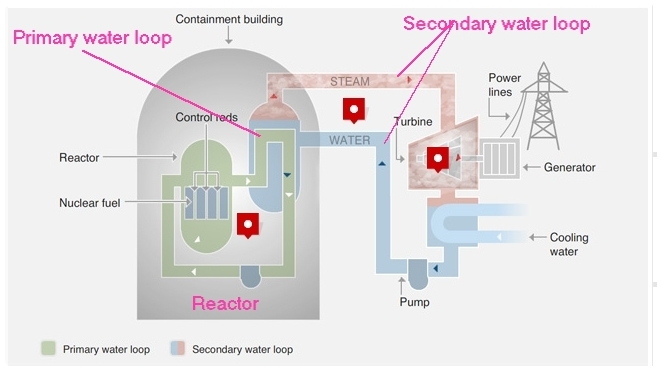


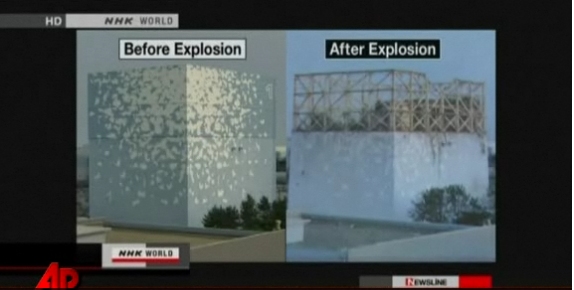
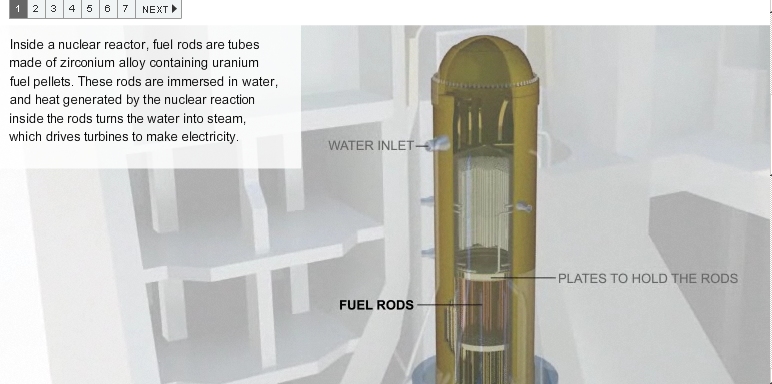
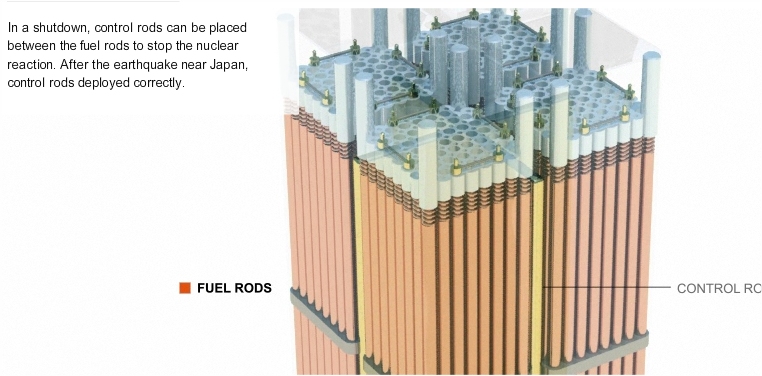
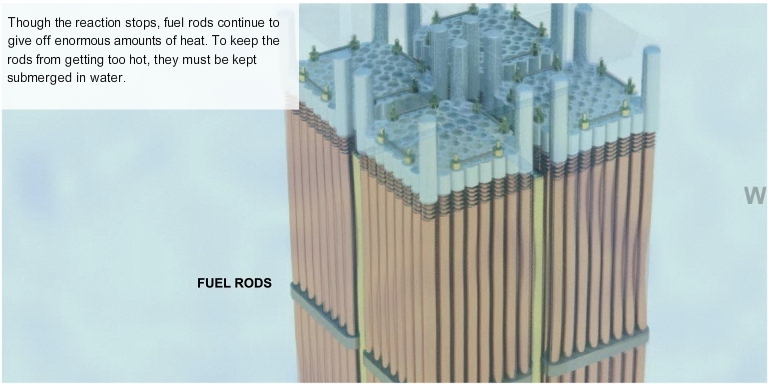


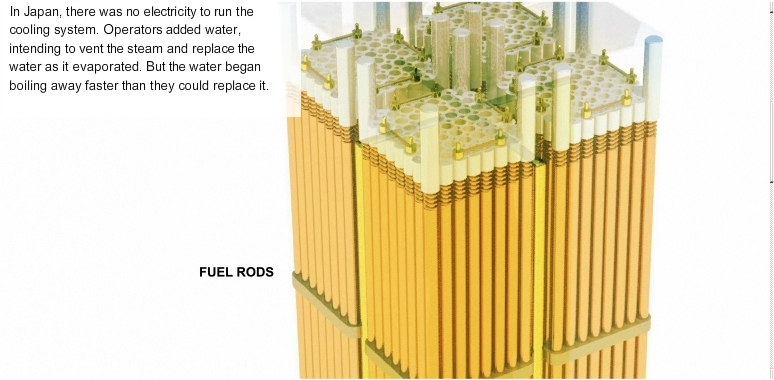
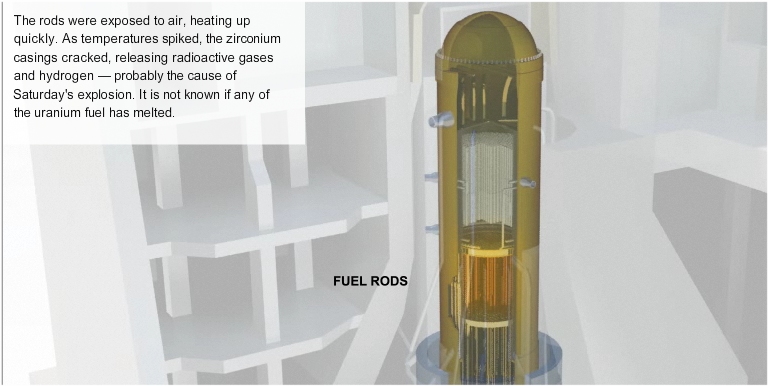
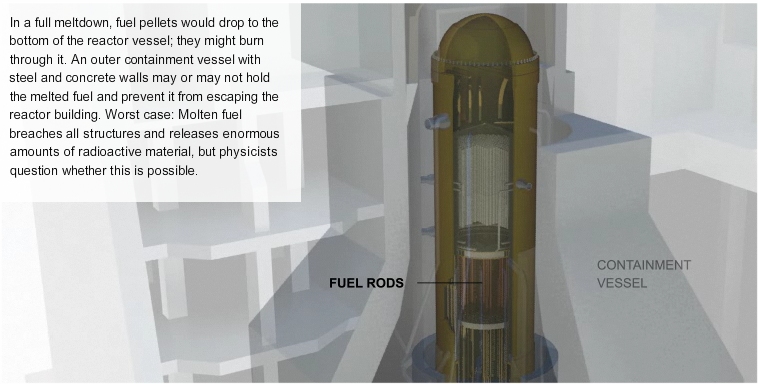
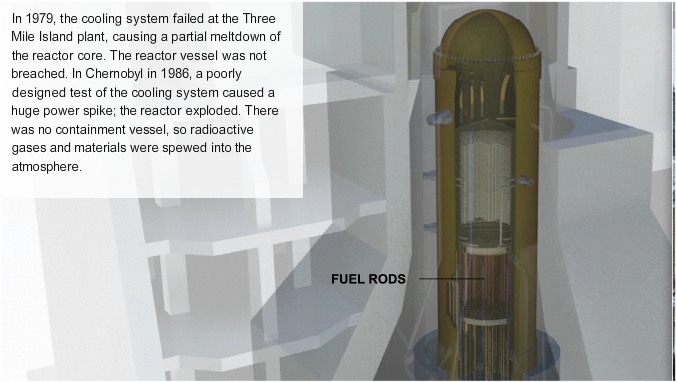
 ไปช่วย
ไปช่วย
